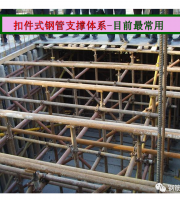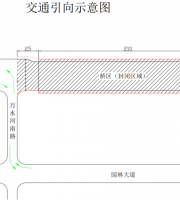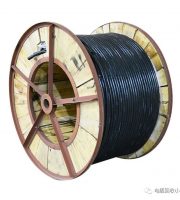Source: the copyright of architectural technology magazine belongs to the original author
.
1
.
The harm of collapsible loess is the instability deformation with large subsidence and rapid subsidence, which can also lead to the uneven settlement of the foundation, causing great harm to buildings, such as the inclination of structures, the damage of house walls, the cracking of bearing structures such as beams and columns, etc
.
To construct in collapsible loess area, it is necessary to take treatment measures for building foundation, so as to reduce collapsible deformation caused by gene flooding in collapsible loess area, ensure the safety and normal use of buildings, and reduce maintenance costs in later period
.
In addition, the main harm to road engineering is the uneven settlement after meeting with water, which leads to a large area of municipal road cracking, and the settlement affects the road construction quality and driving safety
.
2 prevention measures in order to prevent the loess foundation from collapsing due to water immersion, cushion method, dynamic compaction method, impact compaction method, plain soil pile compaction reinforcement method, replacement and other measures can be adopted to improve the bearing capacity of soil layer and reduce subsidence
.
According to the actual situation of the site, the construction method is determined as follows
.
In order to adjust the uniformity of foundation soil and the additional stress of diffusion, improve the bearing capacity of foundation and eliminate the collapsibility of silt layer 2, heavy compaction test was carried out on the brown red silt samples in the borrow area
.
The maximum dry density of brown red silt is 2.06 ~ 2.09g/cm3, and the optimum water content is 6.5% ~ 7.5%
.
By keeping the best water content of the foundation soil, the anti-seepage effect is good and the strength can be greatly improved after compaction
.
Therefore, the layered rolling replacement method is adopted for foundation treatment
.
The replacement thickness should not be less than 1.0 ~ 1.5m, and the compaction coefficient should not be less than 0.95
.
After rolling and backfilling, the characteristic value of foundation bearing capacity can be considered as 180kpa
.
After rolling and backfilling, the collapsibility of foundation soil can be significantly improved
.
Construction requirements of layered rolling and backfilling( 1) A vibratory roller of not less than 15t shall be used( 2) The replacement material is clean brown red silt widely distributed in the site( 3) Ensure that the water content is controlled at the best level( 4) The compaction thickness of each layer shall not be more than 0.3m( 5) The scheme of rolling and backfilling is that after the base is excavated to the designed treatment depth, the base is watered and rolled directly, and then it is rolled and backfilled in layers( 6) Relevant construction measures shall be taken in rainy season
.
2
.
For medium to strong collapsible area, for important buildings, the collapsibility of foundation should be completely eliminated, and the treatment depth should be self weight collapsible foundation, and all collapsible soil layers below the foundation bottom should be treated
.
In order to improve the bearing capacity of foundation and reduce the compressibility of soil layer, dynamic compaction method is adopted
.
The advantages and effects of dynamic compaction method: the construction technology and equipment are simple, easy to operate and control, and the project cost is low
.
It is one of the most common and economic deep foundation treatment methods at present
.
Dynamic compaction method to strengthen the foundation is to give a certain weight of hammer with a certain drop distance to the soil to impact and vibration, so as to improve the strength of the foundation and reduce the compressibility of the soil
.
The process of strength improvement can be divided into: ramming energy conversion, accompanied by forced compression or vibration compaction, soil liquefaction or soil structure damage, drainage consolidation compaction, thixotropic recovery and consolidation compaction, soil strength continues to improve
.
To increase the degree of compaction, improve the condition of soil liquefaction, complete the process of soil compression densification, eliminate the collapsibility of collapsible loess
.
In the treatment of collapsible loess foundation, the influencing factors are analyzed according to the actual situation
.
After comprehensive selection, Yutong ytqh350 hydraulic crawler dynamic compaction machine is adopted, with standard compaction energy level (T.M) 350, hammer weight (T) 17, maximum lifting height (m) 25.7, hammer bottom static pressure 25 ~ 40kpa, and feasible construction scheme is formulated to meet the quality requirements
.
After tamping, the general foundation strength can be increased by 2-5 times, the compressibility can be reduced by 2-10 times, the influence depth of reinforcement can reach 6-10m, and the collapsibility grade of macroporous soil can be eliminated or reduced
.
With high efficiency and fast construction speed, each equipment can handle 5000-10000 square meters of foundation area per month, which can speed up the construction period by 1-2 times compared with pile foundation compaction reinforcement, and save more than 50% of investment
.
For the non self weight collapsible foundation, this method can completely eliminate the collapsibility of the foundation
.
For the self weight collapsible foundation, the remaining collapsibility of the uncompacted soil layer at the lower part should be controlled( 1) The influence factors of dynamic compaction method
.
1) Water content is one of the basic physical properties of soil
.
The change of water content will directly affect the strength of soil
.
The natural water content of collapsible loess foundation is relatively small
.
Compared with the reinforcement of saturated soil foundation, pore water diffusion generally does not appear in the process of dynamic compaction, which is more conducive to the construction of dynamic compaction method
.
2) Void ratio is an important parameter to describe structural changes
.
The natural water content of collapsible loess foundation is relatively small
.
Under the action of huge tamping energy, soil particles and pore space increase, while void ratio decreases
.
After dynamic compaction, the soil is dense and the pore volume can be reduced by about 60%
.
The water content in the soil does not change, but the saturation is increasing( 2) Construction requirements of dynamic compaction method
.
1) Before construction preparation, it is necessary to find out the site conditions, formulate the actual dynamic compaction scheme, carry out dynamic compaction test, preliminarily determine the dynamic compaction parameters, and determine the detection standard before implementation
.
In the process of trial compaction, strengthen monitoring and timely adjustment
.
The number chart of tamping points shall be prepared to be accurate and clear
.
The dynamic compaction construction records shall be made carefully in the whole process, and the relevant measures for construction in rainy season shall be taken
.
2) The arrangement of tamping points is generally arranged in regular triangle or square to facilitate dynamic compaction construction
.
Due to the stress diffusion effect of foundation, the dynamic compaction treatment scope should be larger than that of foundation
.
The distance between tamping points can be determined according to the properties of the foundation soil and the required treatment depth
.
Generally, the distance between tamping points is 1.5-2.5 times of the diameter of tamping hammer
.
According to the properties of the foundation soil and the water content detected on site, it is determined to be rammed twice, and then rammed again with low energy, so as to tamp the loose topsoil
.
Dynamic compaction is generally divided into three times of construction
.
The first and second times are interval skip compaction
.
The hammer center spacing is 1.5D ~ 2.5D
.
The hammer Center (the center distance of compaction position) is 3M, and the interval is 3M × 3M grid positioning, every 3M × 3M square grid is a tamping position, and each tamping position is tamped continuously
.
The tamping times of tamping points can be calculated according to the formula: n = (EL2) / (MH) (the tamping points are arranged in square grid, and the spacing L)
.
After the tamping, check the tamping settlement, and the average tamping settlement of the last two tamping points shall not exceed 5cm, otherwise, add the tamping
.
3) Interval time the interval between two adjacent ramming times
.
Depending on the dissipation time of excess pore water pressure in the soil, combined with the site conditions, for the foundation soil with good permeability in this section, the time interval between the second compaction and the adjacent first compaction shall not be less than 4 days
.
The third compaction in each compaction area must be carried out 4 days after the second compaction in this compaction area..
.





